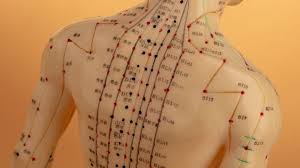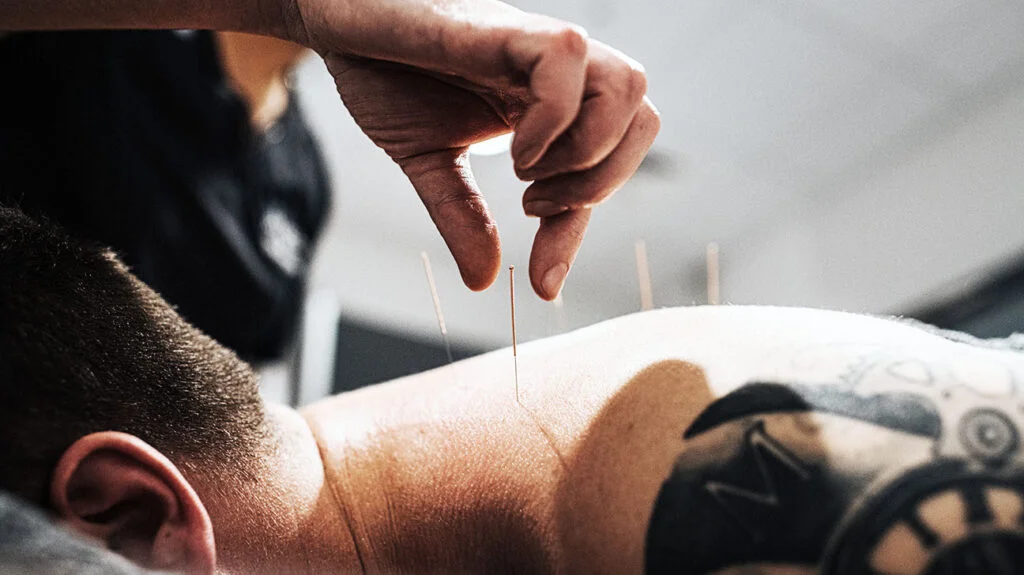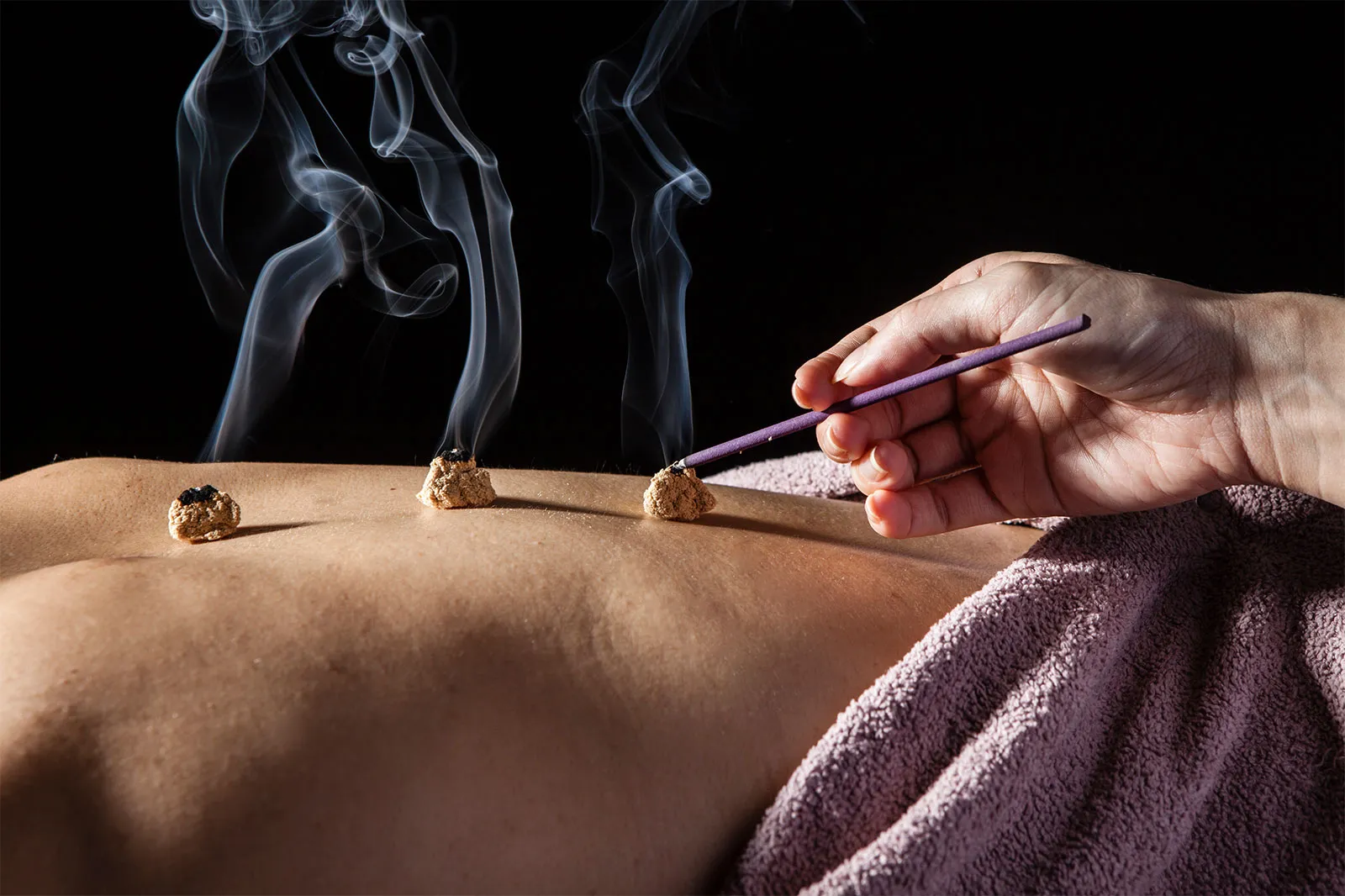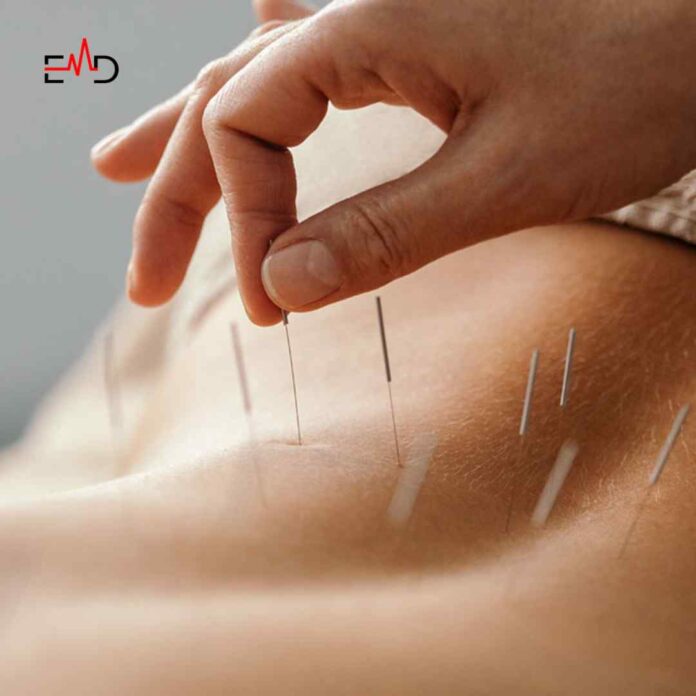Exercise Daily – Acupuncture, a traditional practice originating from ancient China, is widely recognized and utilized today as a complementary and alternative medicine for various conditions. The use of acupuncture involves the insertion of thin needles into specific points in the body, aiming to relieve pain and promote overall well-being.
The National Certification Commission for Acupuncture and Oriental Medicine is a recognized authority that regulates acupuncture and oriental medicine practices in the United States. They ensure that practitioners meet specific standards and provide safe and effective treatments.
What is Acupuncture?
Acupuncture is a therapeutic practice that involves the insertion of fine needles into specific points on the body. These points, known as acupuncture points, are believed to be interconnected along pathways called meridians. By stimulating these points, acupuncture aims to restore the balance of energy, or qi, within the body.
Acupuncture can take various forms, including auricular acupuncture, which involves stimulating specific points on the ear. This type of acupuncture has shown promising results in pain management.

The Origins of Acupuncture
The ancient Chinese originated the practice of acupuncture over 3,000 years ago. They developed it within the framework of Traditional Chinese Medicine, which sees health as harmony and balance within the body. Acupuncture emerged as a method to restore this equilibrium by affecting the flow of qi, the essential energy that circulates throughout the body.
How Does Acupuncture Work?
Acupuncture stimulates specific points on the body by using fine needles. Believers maintain that these acupuncture points lie along meridians, which are pathways connecting different body parts. They assert that inserting needles at these points restores the flow of qi and facilitates healing. Let’s delve deeper into how acupuncture operates:
Acupuncture Points and Meridians
During acupuncture treatments, practitioners insert needles into specific locations on the body known as acupuncture points. Believers assert that these points correspond to various organs, systems, or functions within the body. Practitioners select acupuncture points based on the individual’s condition and the therapeutic outcome they aim to achieve.
Meridians, on the other hand, are the channels through which qi flows. These pathways connect acupuncture points and create an interconnected network throughout the body. There are twelve primary meridians, each associated with a specific organ or system. By stimulating acupuncture points along these meridians, practitioners aim to regulate the flow of qi and restore balance.
Insertion of Acupuncture Needles
During an acupuncture session, thin needles are gently inserted into selected acupuncture points. The needles used in acupuncture are much finer than those used for injections or blood tests, and their insertion is generally painless. The depth and angle of insertion depend on the location of the acupuncture point and the desired effect.
Once the needles are in place, the practitioner may manipulate them by gently twirling or applying mild electrical stimulation. This technique is known as “needle manipulation” and is believed to enhance the therapeutic effects of acupuncture.
The Mechanisms of Acupuncture
The exact mechanisms by which acupuncture exerts its effects are still being studied. However, several theories have been proposed to explain its therapeutic benefits. One theory suggests that acupuncture stimulates the release of endorphins, which are natural pain-relieving chemicals produced by the body. Another theory proposes that acupuncture modulates the activity of neurotransmitters, such as serotonin and dopamine, to promote healing and well-being.
Research has also shown that acupuncture may have anti-inflammatory effects and can influence the immune system. By modulating these physiological processes, acupuncture may help alleviate pain, reduce inflammation, and promote overall health and well-being.
Enhancing Sports Performance with Acupuncture
Acupuncture, a key component of traditional Chinese medicine (TCM), has gained significant attention in recent years for its potential to enhance sports performance. Originating thousands of years ago, acupuncture involves the insertion of thin needles into specific points on the body to stimulate physiological responses. While primarily used to alleviate pain and treat various medical conditions, acupuncture has emerged as a complementary therapy for athletes seeking to optimize their performance and recovery.
Mechanisms of Action
The mechanisms underlying the effects of acupuncture on sports performance are multifaceted and may involve physiological, neurological, and psychological factors:
1. Pain Management
Acupuncture is well-known for its analgesic properties, making it a valuable tool for managing sports-related pain and injuries. By stimulating specific acupoints, acupuncture can modulate pain perception and trigger the release of endorphins, the body’s natural pain-relieving chemicals.
2. Enhanced Circulation
Acupuncture has been shown to improve blood circulation and oxygen delivery to muscles, which is essential for optimal athletic performance and recovery. By enhancing microcirculation and vasodilation, acupuncture may facilitate the removal of metabolic waste products and reduce muscle fatigue.
3. Stress Reduction
Competitive sports often entail high levels of physical and psychological stress, which can impair performance and recovery. Acupuncture has been found to induce a state of relaxation by regulating the autonomic nervous system and reducing levels of stress hormones such as cortisol.
4. Muscle Function and Recovery
Acupuncture may influence muscle function and recovery through various mechanisms, including the modulation of muscle tone, inflammation, and tissue repair processes. Studies suggest that acupuncture may accelerate muscle healing and reduce recovery time following intense physical activity.
5. Regulation of Energy and Endurance
TCM views energy (Qi) as a fundamental aspect of health and vitality. Acupuncture treatments aim to harmonize and balance Qi flow, which may contribute to improved energy levels, endurance, and overall athletic performance.

Effectiveness and Evidence
While the empirical evidence supporting the use of acupuncture in sports performance is growing, research findings have been mixed, partly due to methodological limitations and the complexity of studying acupuncture. Nevertheless, several studies and systematic reviews have reported positive outcomes in various aspects of sports performance:
1. Pain Relief and Injury Management
Numerous studies have demonstrated the effectiveness of acupuncture in relieving pain and promoting recovery from sports-related injuries such as muscle strains, tendonitis, and joint sprains. Acupuncture may offer a non-pharmacological alternative or adjunctive therapy for athletes dealing with chronic pain or musculoskeletal disorders.
2. Performance Enhancement
Some research suggests that acupuncture interventions, when combined with conventional training regimens, may enhance athletic performance in terms of strength, endurance, flexibility, and agility. Athletes utilizing acupuncture report improvements in subjective measures such as perceived exertion, recovery time, and overall well-being.
3. Recovery and Rehabilitation
Acupuncture has shown promise in accelerating post-exercise recovery and reducing the risk of overtraining syndrome. Additionally, by promoting relaxation, improving sleep quality, and reducing muscle soreness, acupuncture may facilitate the body’s adaptive response to training and aid in the rehabilitation process.
4. Psychological Benefits
In addition to its physiological effects, acupuncture may confer psychological benefits such as stress reduction, anxiety relief, and enhanced mental focus. Athletes often report feeling more calm, centered, and mentally resilient following acupuncture sessions, which can positively impact their performance and competitive mindset.

Practical Applications
Acupuncture can be integrated into athletes’ training and recovery protocols in various ways, depending on individual needs and preferences:
1. Pre-Event Preparation
Prior to competitions or intense training sessions, athletes may undergo acupuncture treatments to optimize physical and mental readiness. Acupuncture can help reduce pre-event jitters, alleviate muscle tension, and enhance focus and concentration.
2. Injury Prevention and Rehabilitation
Athletes prone to injury or recovering from sports-related injuries can benefit from regular acupuncture sessions as part of their rehabilitation program. Acupuncture may aid in pain management, promote tissue healing, and prevent recurring injuries by addressing underlying imbalances or weaknesses.
3. Recovery and Recovery
Post-exercise recovery is crucial for athletes to maintain performance and prevent overtraining. Acupuncture can complement other recovery modalities such as rest, nutrition, and hydration by promoting relaxation, reducing inflammation, and facilitating tissue repair.
4. Performance Maintenance
Even during periods of low-intensity training or off-season, athletes can incorporate acupuncture into their routine to maintain optimal physical and mental conditioning. Regular acupuncture sessions may help sustain energy levels, manage stress, and prevent burnout or stagnation.
5. Individualized Treatment Plans
Athletes should work with qualified acupuncturists who can tailor treatment plans to their specific goals, preferences, and health status. Additionally, individualized acupuncture protocols may involve a combination of needling techniques, herbal medicine, dietary recommendations, and lifestyle modifications.
Considerations and Safety
While acupuncture is generally considered safe when performed by trained practitioners using sterile needles, athletes should be aware of certain considerations:
1. Qualifications and Credentials
Athletes should seek acupuncture treatment from licensed or certified practitioners with appropriate training and experience in sports medicine or TCM. It’s essential to verify credentials and inquire about practitioners’ expertise in treating athletes and sports-related conditions.
2. Communication with Healthcare Team
Athletes should inform their coaches, trainers, and healthcare providers about their acupuncture treatments to ensure coordinated care and monitoring of progress. Furthermore, open communication can help identify any potential contraindications, adverse reactions, or interactions with other therapies.
3. Individual Responsiveness
Responses to acupuncture can vary widely among individuals, depending on factors such as constitution, sensitivity, and underlying health conditions. Athletes may need to experiment with different treatment approaches and frequencies to determine what works best for them.
4. Integration with Conventional Care
Acupuncture should be viewed as a complementary therapy rather than a substitute for conventional medical care or sports training principles. Athletes should continue to follow evidence-based practices for injury prevention, rehabilitation, and performance enhancement in conjunction with acupuncture.

Effectiveness of Acupuncture
Acupuncture has been extensively studied for its effectiveness in treating a wide range of conditions. While its precise efficacy varies depending on the condition being treated and the individual. There is evidence that acupuncture may offer several benefits, particularly in the realm of pain management. Here are some areas where acupuncture has shown promise:
Acupuncture for Pain Relief
One of the most widely recognized applications of acupuncture is its ability to provide pain relief. Moreover, research has shown that acupuncture may be effective in alleviating various types of pain, including chronic pain, lower back pain, and neck pain. By stimulating specific points, acupuncture may help activate the body’s natural pain-relieving mechanisms and reduce discomfort.
Acupuncture for Back Pain
Back pain is a common condition that can significantly impact a person’s quality of life. Studies have explored acupuncture as a potential treatment option for back pain, and they have indicated positive outcomes. The insertion of acupuncture needles at specific points may help relax muscles, reduce inflammation, and improve blood circulation in the affected area, leading to pain relief.
Acupuncture for Neck Pain
Neck pain is another prevalent condition that can be debilitating. Acupuncture has been investigated as a non-pharmacological approach to managing neck pain.

Benefits of Acupuncture
In addition to its potential effectiveness in pain management, acupuncture offers several other benefits that contribute to its popularity as a holistic healing practice. Here are some key advantages of acupuncture:
Holistic Approach to Healing
Acupuncture takes a holistic approach to healing, considering the interconnectedness of the body, mind, and spirit. By addressing imbalances and promoting the body’s self-healing abilities, acupuncture aims to provide comprehensive care and support overall well-being.
Complementary Treatment Options
Acupuncture can complement other treatment modalities, including conventional medicine. It is use in conjunction with medications, physical therapy, or surgery to enhance treatment outcomes and improve the overall efficacy of the therapeutic approach.
Potential Psychological Benefits
In addition to its physical benefits, acupuncture may also have positive psychological effects. Many individuals report feeling relaxed, calm, and mentally rejuvenated after an acupuncture session.
Risks of Acupuncture
While acupuncture is generally considered safe when performed by qualified practitioners, it is essential to be aware of potential risks and safety considerations. Here are some important points to consider:
Safety of Acupuncture
When performed by a trained and licensed acupuncturist, acupuncture is considered safe. It is crucial to seek treatment from a qualified practitioner who follows strict hygiene protocols and uses sterile needles. This helps minimize the risk of infection and ensures a safe acupuncture experience.
Potential Side Effects
Although rare, some individuals may experience mild side effects after acupuncture, including slight bruising, bleeding at the insertion site, or temporary soreness.
Qualified Practitioners and Sterile Needles
To ensure the safety and effectiveness of acupuncture, it is important to seek treatment from qualified practitioners. In many countries, acupuncturists are required to be licensed or certified by recognized regulatory bodies. Additionally, using sterile needles is crucial to prevent infection and promote safe practice.
Acupuncture and Chinese Medicine
Traditional Chinese Medicine (TCM), a comprehensive healing system encompassing various practices such as acupuncture, herbal medicine, and dietary therapy, deeply intertwines with acupuncture. Here’s a closer look at the relationship between acupuncture and Chinese medicine:
Traditional Chinese Medicine (TCM)
Traditional Chinese Medicine is a holistic medical system that originated in ancient China. It is based on the concept of balance and harmony between opposing forces, such as yin and yang, and the flow of qi through meridians. TCM views the body as an interconnected whole and aims to restore balance and harmony to promote health and well-being.
Acupuncture as a Component of TCM
Acupuncture plays a crucial role in Traditional Chinese Medicine. It is considered one of the key treatment modalities used to restore the balance of qi and promote the body’s self-healing abilities. In TCM, the selection of acupuncture points is based on an individualized assessment of the person’s condition, taking into account various factors such as symptoms, medical history, and overall constitution.
Integrating Acupuncture with Other TCM Practices
In addition to acupuncture, Traditional Chinese Medicine incorporates various other practices, such as herbal medicine, dietary therapy, and mind-body exercises like Tai Chi and Qigong.

Medical Acupuncture
Healthcare professionals, such as physicians or physiotherapists, practice medical acupuncture, also known as Western or scientific acupuncture. Here’s what you need to know about medical acupuncture:
Medical Acupuncture versus Traditional Acupuncture
Medical acupuncture follows the principles of traditional acupuncture but is practiced within a Western medical framework. It combines the ancient wisdom of acupuncture with modern scientific knowledge and evidence-based medicine. Medical acupuncturists often integrate acupuncture into their clinical practice to enhance patient care.
American Academy of Medical Acupuncture
The American Academy of Medical Acupuncture (AAMA) is a professional organization that promotes the integration of acupuncture with Western medicine. Additionally, it provides training, education, and resources for healthcare professionals interested in incorporating acupuncture into their practice. Moreover, the AAMA emphasizes the importance of evidence-based medicine and encourages research in the field of medical acupuncture.
Evidence Supporting Medical Acupuncture
Numerous studies have explored the efficacy of acupuncture in treating various medical conditions. Although researchers are still investigating the exact mechanisms of action, they have uncovered promising results. Medical acupuncture has proven effective in managing pain, including chronic conditions like osteoarthritis, migraines, and fibromyalgia. Additionally, it may offer benefits for conditions such as nausea, vomiting, insomnia, anxiety, and infertility.
The integration of acupuncture with Western medicine allows for a multidimensional approach to patient care, combining conventional treatments with complementary therapies. This holistic approach aims to address not only the physical symptoms but also the emotional and psychological aspects of health.
Conclusion
Acupuncture is a therapeutic practice that has been used for thousands of years to promote healing and balance in the body. It involves the insertion of fine needles into specific points on the body, stimulating the flow of qi and restoring harmony. Acupuncture has shown promise in pain management, particularly for conditions such as back pain and neck pain. It offers a holistic approach to healing, complementing other treatment options and potentially providing psychological benefits.
FAQs – Acupuncture: Benefits, Risks, and How it Works
Q: What conditions can acupuncture treat?
A: Practitioners use acupuncture to treat a wide range of conditions, commonly focusing on pain management for issues like back pain, neck pain, migraines, and arthritis. Additionally, it may offer benefits for conditions such as anxiety, insomnia, digestive disorders, infertility, and stress-related ailments.
Q: How does acupuncture work?
A: The exact mechanisms of acupuncture are still being studied, but it is believed to stimulate the body’s natural healing response. By inserting needles into specific points, acupuncture can help regulate the flow of energy, promote blood circulation, and release endorphins, which are the body’s natural pain-relieving chemicals.
Q: Is acupuncture safe?
A: When perform acupuncture by a qualified and licensed practitioner, acupuncture is generally considered safe. The needles used are sterile and disposable, minimizing the risk of infection. However, it is important to disclose any existing medical conditions or medications to your acupuncturist to ensure safe and effective treatment.
Q: Does acupuncture hurt?
A: People generally tolerate acupuncture well, often describing it as causing minimal sensation. Some people may feel a slight prick or tingling sensation as the needles insert, but it typically isn’t painful. Acupuncture needles, being much thinner than hypodermic needles used for injections, contribute to a more comfortable experience.
Q: How many acupuncture sessions are needed?
A: The acupuncturist assesses the number of sessions required based on the treated condition, its severity, and the individual’s response to treatment. Some acute conditions may necessitate only a few sessions, while chronic conditions may demand ongoing or periodic treatments. The acupuncturist tailors a treatment plan to your specific needs, assessing your progress along the way.





